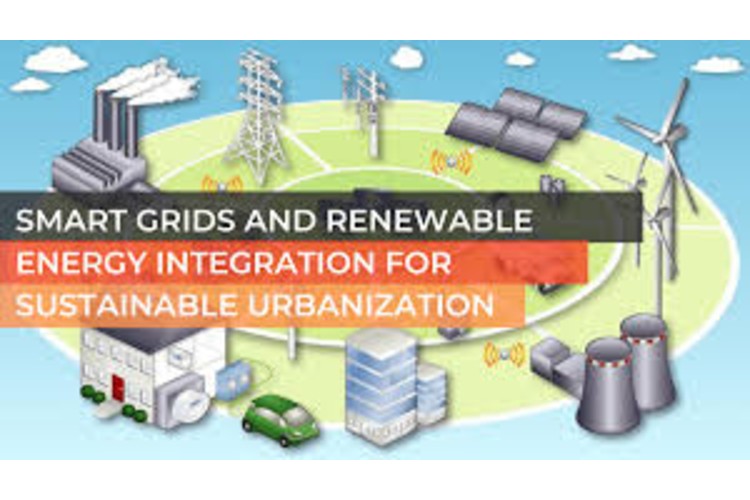WILMINGTON, DE, UNITED STATES – According to a new report published by Allied Market Research, the energy storage system market size was valued at $198.8 billion in 2022, and is estimated to reach $329.1 billion by 2032, growing at a CAGR of 5.2% from 2023 to 2032.
An energy storage system (ESS) represents a pivotal technological advancement capable of storing electricity for subsequent use. These systems, comprising individual devices or interconnected units, offer a versatile solution catering to a spectrum of needs within the energy landscape.
Asia-Pacific held the highest market share in 2022, accounting for more than two-fifths of the market revenue, and is estimated to dominate during the Energy Storage System Market Forecast. However, the Asia-Pacific segment is projected to manifest the highest CAGR of 5.7% from 2023 to 2032.
The major players operating in the global energy storage system industry analysis include Scheider Electric, SMA Solar Technology AG, Exide Industries Ltd., SK Holdings, Autobat, Enerbrax Acumuladores Ltda, Eguana Technologies, Imergy Power Systems, Ionotec Ltd, and Tata Power.
Industries account for a significant portion of global energy consumption, making energy optimization a critical focus area for enhancing operational efficiency and reducing costs.
Energy storage systems present an opportunity for industrial facilities to optimize their energy usage by implementing demand response strategies, peak shaving techniques, and load management solutions.
By integrating energy storage with industrial processes, companies can mitigate peak demand charges, improve power quality, and enhance grid resilience.
Energy storage systems enable industrial facilities to store excess energy during periods of low demand and utilize it during peak hours, resulting in substantial cost savings and reduced reliance on fossil fuel-based backup generators.
As industries prioritize sustainability and cost-effectiveness, the adoption of energy storage for industrial energy optimization is expected to drive Energy Storage System Market growth and innovation in the energy storage sector. The abovementioned Energy Storage System Market Trends will drive the growth of the energy storage sector across the globe during the forecast period.
Government policies and regulatory frameworks significantly impact the adoption and deployment of energy storage systems. Many governments implement renewable energy mandates, tax incentives, and subsidies to encourage investment in energy storage projects. These incentives reduce financial barriers, stimulate innovation, and provide certainty for investors and developers.
Perception of risk, including concerns related to technology reliability, performance variability, and financial viability, acts as a significant deterrent to the widespread adoption of energy storage systems.
While energy storage technologies offer numerous benefits, including grid stabilization, peak demand management, and renewable energy integration, potential customers perceive them as relatively nascent and unproven compared to traditional energy infrastructure.
This perception of risk can lead to reluctance from investors, utilities, and end-users to commit to large-scale energy storage projects, particularly in the absence of long-term performance data and proven business models.
Uncertainties surrounding regulatory frameworks, market structures, and revenue streams can further boost the perception of risk and hinder investment in Energy Storage System Industry.
Regional Analysis
In December 2022, the Australian Renewable Energy Agency (ARENA) announced funding support for a total of 2 GW/4.2 GWh of grid-scale storage capacity, equipped with grid-forming inverters to provide essential system services that are currently supplied by thermal power plants.
In September 2022, India released its draft National Electricity Plan, setting out ambitious targets for the development of battery energy storage, with an estimated capacity of between 51 to 84 GW installed by 2031-32.
The U.S. Inflation Reduction Act, passed in August 2022, includes an investment tax credit for stand-alone storage, which is expected to boost the competitiveness of new grid-scale storage projects.
In July 2021, China announced plans to install over 30GW of energy storage by 2025 (excluding pumped-storage hydropower), a more than three-fold increase on its installed capacity as of 2022.
On the basis of technology, the Energy Storage System Market is divided into pumped hydro storage, battery energy storage, compressed air energy storage, flywheel energy storage, and others. The pumped hydro storage dominated the market accounting for more than four-fifths of the Energy Storage Systems Market Share in 2022.
As per end-use, the Energy Storage System Market is segregated into residential, commercial, and industrial. The residential is the fastest growing segment growing with the CAGR of 6.0% from 2023-2032.
On the basis of application, the Energy Storage System Market is bifurcated into stationary and transportation. The stationary segment dominated the market accounting for four-fifths of the Energy Storage System Market size in 2022.













